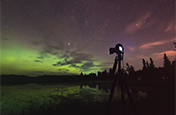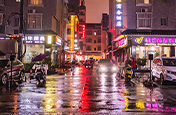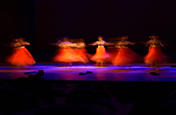Take your time with long exposure photography.
Adjusting shutter speed gives photographers power over time. See how you can transform distant stars into glowing light trails and rushing rivers into soft blankets of water with long exposure shots.
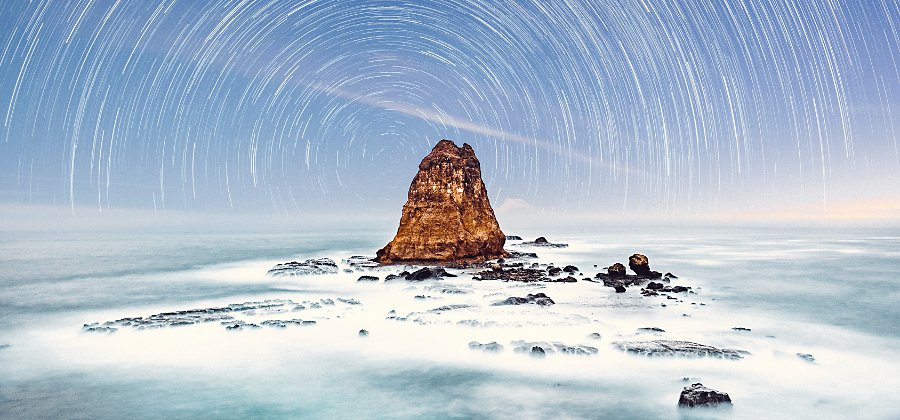
Explore the ins and outs of long exposure photography.
With a fast shutter speed, photographers can freeze time and create a snapshot of the world. With a longer exposure, that sense of time changes and adds dynamism to the photo. “Long exposure photography is when you allow your camera’s sensor to gather light for a longer amount of time. One major goal of this is revealing more detail in the darker areas of the scene,” explains photographer Nick Ulivieri. “For more creative purposes, you may want to use a long exposure to create a sense of motion in your images.”
The average photo is taken in about 1/60 of a second. But by changing the shutter speed, and leaving the shutter of your camera open for longer, you can collect more light and capture something new. But leaving the shutter open affects your other camera settings, including your aperture and ISO. Longer exposures allow you the ability to capture stunning images, but getting those beautiful images requires some experimentation and test shots to find the correct exposure time.
Diving into the technical details.
If you’re looking to explore landscape photography or night photography, it’s important to understand the mechanics of long exposure photography. When the light is low, like just after sundown when the sky is streaked with colors, snapping a quick photo with a fast shutter speed won’t do your scenery justice. But simply shooting with a long shutter speed won’t give you the look you want either.
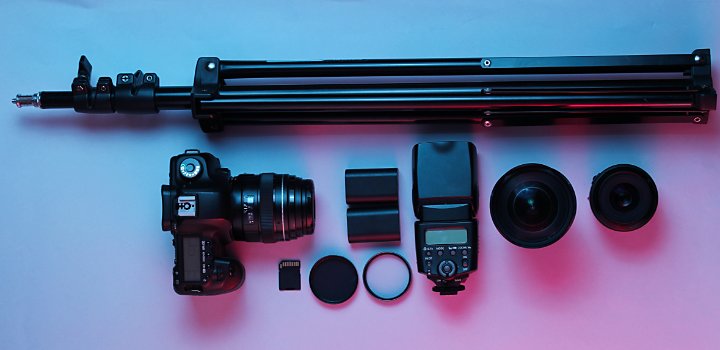
Get your gear together.
The perfect long exposure takes practice and understanding of your camera and equipment. For a successful image, you want to avoid any kind of camera shake. “Your tripod is the most important thing. If you don’t have a sturdy tripod and the wind blows and it shakes your camera, it’s going to cause things to get blurry,” says photographer and professor Adam Long. Camera shake can occur when you simply push the shutter button on your camera. Using a shutter release button allows you to set your time and start your exposure without touching the camera.
Every camera is different, but DSLR and digital cameras have a manual mode, which allows photographers to choose their own aperture, shutter speed, and ISO. For long exposures, some cameras offer up to a 30-second-long shutter speed. For longer shutter speeds, you’ll need to use the bulb setting (sometimes called bulb mode) to get the right exposure. Using the bulb setting in your camera allows you to keep the shutter open for as long as you hold down the shutter release button.
Understanding aperture and ISO.
Shutter speed, aperture, and ISO are all closely related, and all affect the exposure of your image. When one setting changes, the others need to adjust to counter it. Using a high f-stop number makes the aperture (opening) in your lens very small, limiting the amount of light the sensor of your camera receives. A small aperture means you’ll need a longer shutter speed and exposure time, and you may need to increase your ISO, or light sensitivity. But increasing ISO can increase the graininess of your images.

Most long exposure photos are taken with a high f-stop number to avoid overexposing the image. You can create long exposure photos with a low f-stop number as well, but it takes a few more steps.
Neutral density filters, often called ND filters, or 10-stop filters, are placed in front of the camera lens to reduce the amount of light entering the camera. This allows you to keep your f-stop number and ISO low, while also using a long shutter speed. ND filters are helpful when shooting during the day, when the light is exceptionally bright. In short, an ND filter gives the photographer more control over depth of field and shutter speed.
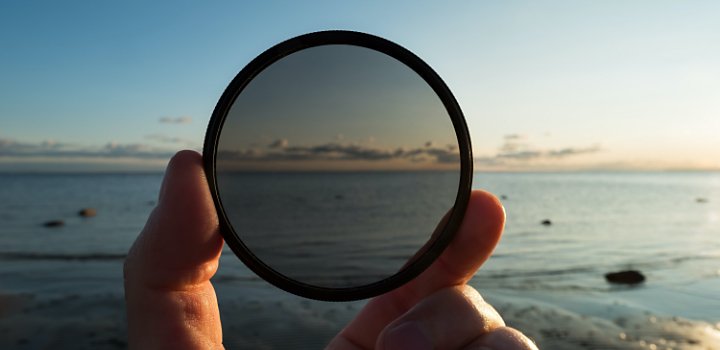
Manual focus.
Be sure to use manual focus settings on your camera, instead of the autofocus settings. With manual focus, you can get very precise about where your depth of field falls and which objects will be in focus. You don’t want your camera to autofocus on the wrong object in your image and ruin a two-minute exposure.
Explore the possibilities of long exposure images.
Now that you understand the mechanics of long exposure photography, it’s time to see what’s possible. Just like other styles of photography, you can’t control everything. “When the wind moves the trees or a car drives through your shot, you have to anticipate those things. You have to visualize what the shot will look like,” says Long. By honing that visualization ability with practice, and learning what you can control — and how to control it — you can capture the best images possible in your given environment.
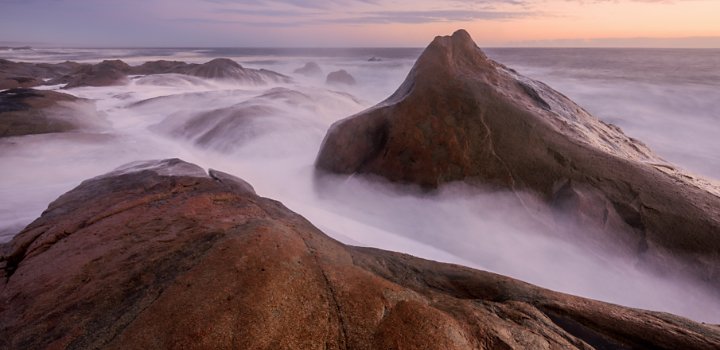
Long exposure landscape photography.
One of the best times to create long exposure photos is 15 minutes to an hour after sunset. “You get the nicest kind of light, and you still have some color in the sky. That’s a great time to do long exposures because you can get an even exposure between the deepening blue sky above with the vibrant city lights below,” explains Ulivieri. Long exposures give you the opportunity to highlight the ambience and atmosphere of a location. So, whether you’re shooting dreamy landscapes or vast seascapes, long exposures give you a chance to photograph something new every time.

Night photography.
“Anytime you’re photographing at night, that’s one of the most common uses of long exposure,” notes Long. Because there’s less ambient light, you’ll need a longer exposure to counterbalance it. Whether you’re capturing star trails over the course of hours or light trails from cars speeding down a road, night photography is a great opportunity to highlight the passage of time with long exposures. Plus, it often results in hauntingly pretty photos.
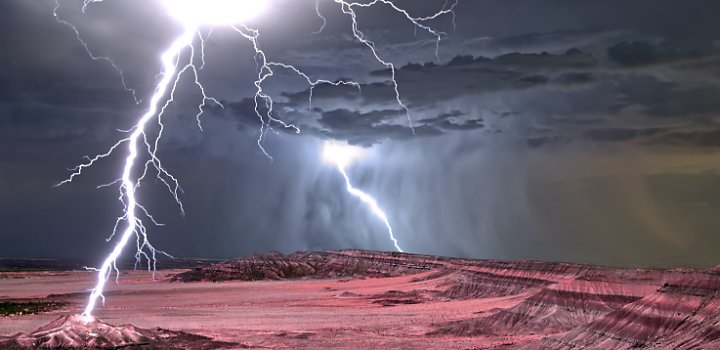
Lightning and storm photography.
Highlighting the unpredictable drama of lightning and storms is a great way to create unique long exposures. Because you can never know when lightning will strike, explains Ulivieri, “If I’m taking 12-second exposures — because that’s what sky conditions dictate — I just keep taking them over and over in quick succession with the hope that my shutter is already open by the time the lightning hits.” Capturing something so dynamic in a single photo takes practice and patience. But by understanding the mechanics of a long exposure photo, you’re one step closer to capturing stunning storm photography.
Whatever subject matter you choose, long exposure photography gives the artist control over time in a new way. Through trial and error, you learn what settings and gear work best for every situation. Now, the only thing left to do is decide what to photograph first.
Contributors
You might also be interested in…
Discover the ins and outs of capturing stunning images of the night sky.
Explore the exciting world of storm and lightning photography.
Discover how to capture lightning strikes on camera and learn safety tips for photographing storms.
Night Photography.
Low light doesn’t have to equal low quality with these tips for successful nighttime photos.
Discover how adjusting shutter speed can help you capture clean shots or motion-filled moments.
